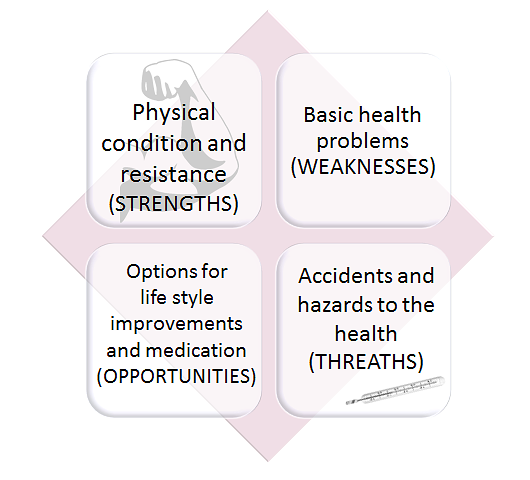The health and operating capacity of innovation activities in Tampere Region have been examined using a SWOT analysis. What are the region’s internal strengths and weaknesses, and what are its external opportunities and threats?
The analysis is based on an outlook resulting from the situational picture of innovation in Tampere Region in 2015.
“Physical condition and resistance” (STRENGTHS)
- The diversity of business activities, the reform of industrial fields and the increase in digital services have together kept the number of jobs fairly stable.
- The population is highly educated. The diverse university field refines intellectual capital.
- The attractive atmosphere, central location and the living environment fascinate people moving into the region. The region's image has stabilised its position as number one in the country.
- The region has international experts and a tradition of export expertise.
- Growth and stock exchange listings are common in various fields.
- The decrease in R&D funding has evened out. RDI costs of EUR 0.9 billion are significant. Currently, the decrease in private R&D activities has been patched up through means of public funding.
- The development culture is active. The region is working towards the future.
“Basic regional health problems” (WEAKNESSES)
- Regardless of the resilience of business life, more jobs are disappearing than growing fields are able to produce. Job-seeking movers add pressure to the management of the employment situation.
- The highly educated and expertised population and international human capital cannot be harnessed for economic growth.
- Universities have not been able to extensively create a general readiness or willingness towards entrepreneurship.
- Cooperation between companies and the development of new business ecosystems is proceeding slowly.
- The region depends on external R&D funding. Private capital investments are fairly low.
- R&D funding instruments need to be modernised. The ability to take risks is defective. The corporate-centred way of thinking and the allocation of R&D assets to stabilised operators do not respond to the structural changes.
- There are a vulnerably low number of key employees in the innovation field, and resources are fragmented.
“Options for life style changes and regional improvements” (OPPORTUNITIES)
- Digitisation extends to all activities. Tampere Region is capable of understanding the significance of the digitisation leap and application development in all business fields.
- The region has decided to be a trailblazer. Single parties are committing to the idea that uncertainty can be tackled together, with Tampere3 process leading the way.
- The reformation in the public sector opens up new opportunities for experimentation.
- The region is not satisfied with being second best target in Finland; it sets it strategic sights globally.
- The region is able to identify global resource flows and connect to them. The region is utilising its networks to open new doors.
- Birth mechanisms for innovations are understood more diversely. Universities and companies are opening up towards each other through open innovation platforms. Additionally local benchmarking, pilots and applications.
- Establishing a company is a realistic option for more and more experts.
- Business ecosystems provide entrepreneurs with security through networks. Entrepreneurs are able to find shared leads.
- Soft values, social wellbeing and green movements are regarded as an opportunity for innovation.
“Accidents and hazards to the region’s health” (THREATS)
- Public R&D funding may be reduced to a level of no recovery. The level of R&D may deteriorate.
- Energy may be consumed bouncing between financial instruments, which eats up the productivity of development work.
- Organisational changes at universities may bring basic work to a standstill.
- Experts may become frustrated and leave the region due to the lack of opportunities. Entrepreneurship may be unprofitable.
- Foreign funds may not flow to the region.
- The region may become buyers, not actors, in the digitising world. The value of digital information may not be properly understood.
- Manufacturing may shut down without any productive replacement.
- Uncertainty may lead to paralysis. Everyone does what they have always done.
- The political atmosphere may become polarised and prevents any decisions reforming innovation activities.
- Learning requirements may develop faster than educational services and supplies are able to respond.
Next: Growth companies reshape business life: corporate analysis over the 2010-2013 growth period or Back to Contents
